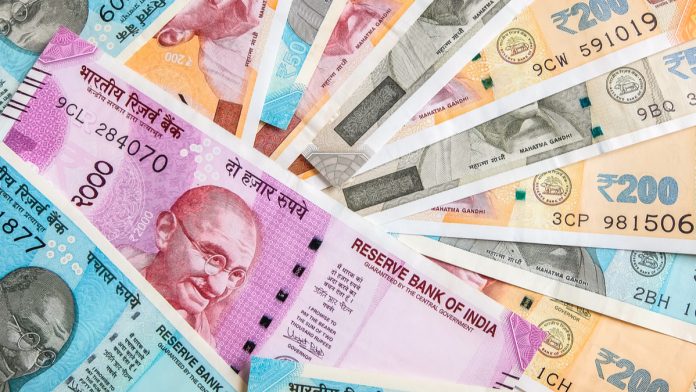- Indian Rupee (INR) rises after losses yesterday
- China’s inflation falls 1% MoM in March
- US Dollar (USD) holds steady versus major peers
- US PPI inflation rose 2.4% YoY
The US Dollar Indian Rupee (USD/INR) exchange rate is falling after yesterday’s gains. The pair rose 0.25% in the previous session, settling on Wednesday at 82.38. At 17:00 UTC, USD/INR trades -0.06% at 82.33 and is in a range of 83.03 to 82.94.
The Rupee is rising despite weaker-than-expected Chinese inflation data.
Chinese inflation cooled more than expected in March, missing forecasts and raising concerns about consumer demand in the world’s second-largest economy and one of India’s largest trading partners. Chinese inflation fell by 0.7% year on year in February, below the 0.4% forecast and down significantly from a 1% gain.
The data comes as China faces risks of risk of deflation and domestic demand remains weak.
Yesterday Fitch Ratings agency downwardly revised China China’s credit rating amid concerns over debt levels and slow growth.
The US Dollar is falling against the Rupee but holding steady against its major peers. The US Dollar Index, which measures the greenback versus a basket of major currencies, trades at +0.02% at the time of writing at 105.26, recovering from losses yesterday.
The USD is holding steady after US wholesale inflation data, and despite US jobless claims, it is showing resilience in the labour market.
The US producer price index, which measures inflation at the factory gate level, was 0.2% month over month in March, down from 0.6% in February. However, on an annual basis, the PPI actually ticked higher to 2.4%, above the forecast 2.3% in February.
The data comes after yesterday’s stronger-than-expected consumer price index. Yesterday, CPI rose for a third straight month to 3.5% year on year, up from 3.2% in February. The stronger-than-expected inflation reports saw the market push back Federal Reserve rate cut expectations.
Meanwhile the jobs data her jobless claims were slightly stronger than expected at 211,000. The jobs market has continued to show resilience despite interest rates at a 22 year high.





